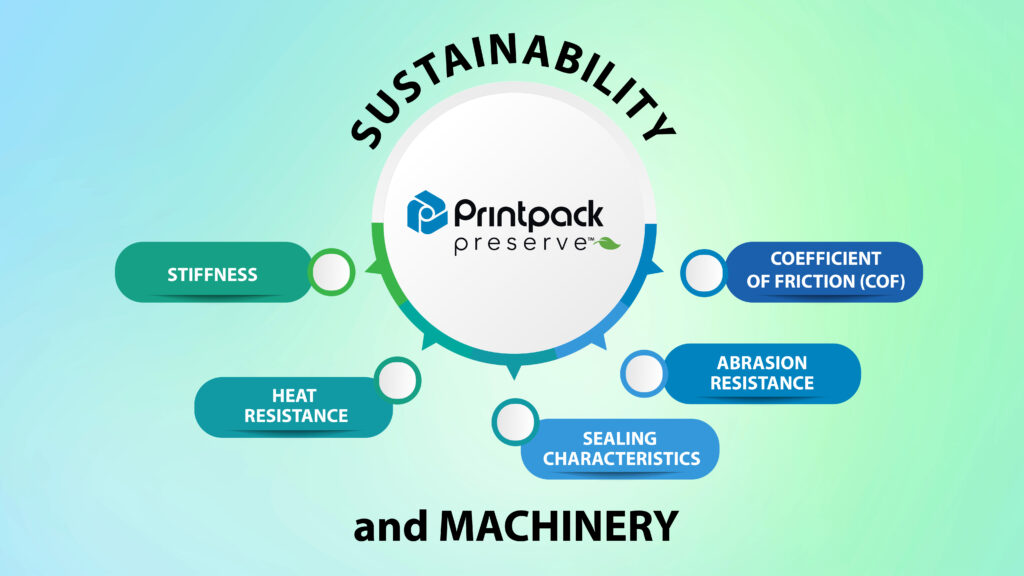Sustainable packaging materials often behave differently from traditional materials, which can affect how they run on packaging machines. In order to run sustainable materials on your machines at speed, machine adjustments and modifications may be necessary. For instance, switching from plastic film to recyclable paper usually requires a new forming collar with a different shape to handle the material properly.
Here are some other examples of a structure’s physical properties that may require adaptation of machinery:
- Stiffness
- Heat Resistance
- Sealing Characteristics
- Coefficient of friction (COF)
- Abrasion Resistance
It’s important to set realistic expectations with your operations team when switching to sustainable packaging. Here are the top four challenges we see when brands begin to implement sustainable structures.
Limited Resources and Slow Progress
Many brands face the challenge of not having the resources to move quickly on sustainable packaging initiatives. Prioritize and streamline your approach by focusing on high-impact projects based on volume. Consolidate specifications and use the shift to sustainable packaging as an opportunity to streamline your existing specifications. Group similar materials and formats together to reduce complexity and make the transition more efficient. Lastly,
purchase raw materials in advance, and run tests with multiple variables at the same time to gather more data in a shorter time frame.
Unclear Strategy and Resistance from Operations
Uncertainty about sustainable packaging options, along with concerns from operations about run speeds, waste, and capacity, can slow progress. Partner with pre-existing suppliers to narrow options based on feasibility, cost, and supply. Focus on high-volume packaging types and choose one or two to develop. To address resistance from operations, use proven change management tools to ensure a smooth transition, clarify direction, and ease operational concerns.
High Development Costs for Sustainable Packaging
Developing sustainable packaging can be expensive, making companies hesitant to move forward. Combat this by starting small and using proven materials. Begin with digital printing and leverage materials that have already been successful in other applications—there’s no need to reinvent the wheel! Consider all costs holistically, including Extended Producer Responsibility (EPR) fees, supply access, and consumer and retailer requirements to ensure a well-rounded approach.
Limited Technology and Machine Access
Many manufacturers face challenges with technology that isn’t fully ready , along with limited machine time in their plants. Conduct a “soft launch” without on-pack claims to test and optimize the supply chain, and focus on one or two items at a time for continuous improvement. Collaborate with OEMs and suppliers and consider bench-top testing with pre-vetted materials to streamline the process and enhance performance.
Research and insights sourced from Megan Robison, Product Stewartship Manager.





